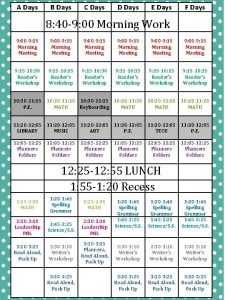Summer Eats Summer Eats As the days heat































- Slides: 31

Summer Eats!

Summer Eats As the days heat up, you’ll want to eat up a variety of summer produce, prepare easy and light meals, and take some of your cooking and eating outdoors—and, of course, summer calls for cool and frosty treats! It’s a perfect time to cook together as a family, try new recipes, and have some fun in the kitchen, garden, or neighborhood. There’s also so much to explore when it comes to food and cooking—from the mathematics of measuring to the science of the senses—which makes it a great way for both kids and parents to take up summer learning in a fun (and delicious!) way. It’s never too early to unleash your inner epicure, and these quick and easy activities will get your creative juices flowing and your mouth watering as you connect to this vital part of culture and community.

Share with us at #We. Are. LRNG At its core, food is about sharing, and we invite you to connect your culinary adventures to those of other kids and parents this summer. For each of these activities, post your creations on Instagram, Twitter, or other social media platforms using #We. Are. LRNG. This playlist is for all ages and designed for the time you have. Jump right in! (Download a printable PDF version of this slideshow. ) If you have 5 minutes If you have 30 minutes If you have 1 hour If you have a whole afternoon Or if you have the entire weekend!

I’ve got 5 minutes. . .

Dare to Devour Supplies: A new food you’ve never tried or have been meaning to try. Your tastebuds. Have you been curious about trying that starfruit you passed at the market the other day? Or wonder what those different sized bananas might taste like? Maybe there’s a certain type of cuisine that you’ve been wanting to explore or a restaurant in your neighborhood just waiting to be discovered. Maybe you stumbled upon a regional delicacy on a summer vacation or a recipe a family member has been making for years. Regardless of the circumstances, we double dog dare you to try a brand new food! Don’t forget to snap a pic of the first bite and share what you thought of it on Instagram or Twitter using #We. Are. LRNG!

Don’t Worry, Be Scrappy Supplies: Food scraps from cooking, potting soil, water, jars, tins, or leftover containers. You’ll be amazed by the range of foods you can grow and re-grow right in your own kitchen; herbs, carrots, lettuce—even pineapple! One of the easiest vegetables to regrow at home is celery. Simply preserve the bottom of the stalk and place it face up in a bowl of shallow water. Place it in the sun for a week, and transfer to soil once you see new leaves or stalks sprouting from the middle. We like this set of infographics on how to plant a variety of kitchen scraps. Share what you grow and how much time it took on Instagram or Twitter using #We. Are. LRNG!

I’ve got 30 minutes …

Toast of the Town Supplies: Your favorite bread, various toppings. Your morning toast doesn’t have to be boring. For this activity, dress it up and go wild with the toppings! Use a little schmear of cream cheese or ricotta cheese, which make great foundations for sweet or savory toppings. Use peanut butter or nutella for a sweet treat. Some of our favorite toast additions are: fried egg, sweet peppers, walnuts, mangos, feta cheese, pumpkin seeds, herbs, tomatoes, radishes, bacon, cucumber, green onions, and honey. Make faces, animals or selfportraits—the possibilities are endless! Share what you make and how it tastes on Instagram or Twitter using #We. Are. LRNG.

…Toast of the Town Another of our favorites is avocado toast, which isn’t just for brunch-going millennials! Avocados are a fantastic source of potassium and other nutrients, and they make a great base for loads of different toppings. 4 fun facts about avocados: ● ● Avocados originated in Mexico and Central America. Their consumption can be traced back as far back as 8, 000 BCE. You might have heard that an avocado is not a vegetable, but a fruit. That’s correct! More specifically, the avocado is a berry, which is defined as a fleshy fruit produced by a single, matured ovary of a flower (watermelon, pumpkins, and bananas also fall into this category —whoa!). ● ● Avocados have more potassium than a banana, with a whopping 975 milligrams. On average, bananas contain about half that. Need an avocado to ripen quickly? Store it in a brown paper bag with a banana; the ethelyne gas released from the banana will make your avocado guacamole-ready in no time. **Avocados might be more widely available in some regions over others, or they might also be on the spendy side where you live. Smashed peas (fresh or frozen) can make for a great alternative. . Tip: Save your avocado seed and plant it. See Don’t Worry, Be Scrappy for more info on how.

Jar Drinks Supplies: Standard (not wide mouth) Mason jars, frozen fruit, greek yogurt, seeds or spices, blender. Sometimes you just want a smoothie but don’t have the time to put everything together or are all out of the necessary fresh ingredients. Enter the modest but multi-purpose Mason jar! Fill these kitchen helpers with a variety of fruits, veggies, seeds, and other ingredients, and stash them in the freezer for when your next smoothie craving strikes. Freezing overnight is best, but most ingredients last up to two weeks. Share your recipe and how it tastes on Instagram or Twitter using #We. Are. LRNG!

… Jar Drinks Bananas always make a great base for a smoothie (overripe ones work well here); just slice them up and add to your jar, along with any ingredients you choose. Berries, spinach, kale, carrots, pineapple, mangos, yogurt, and flax seeds are all excellent choices, but the sky’s the limit. When you’re ready for a smoothie, just fill the jar with orange juice, milk, or water, dump the contents in a blender, and give it a whir! Some blenders allow for mixing up your ingredients right in the jar. Standard mouth jars will attach directly to many blender bases and screw in to create a watertight seal, allowing you to prep, mix, and drink all from the same glass, a trick that works well for busy school day mornings, too. But wait! What’s the science behind your smoothie? Smoothies are an example of a mixture. Specifically, most smoothies are heterogeneous solutions. Find out more about what that means and about different kinds of mixtures in this blog post from children’s science book author, Janice Vancleave. Chemistry never tasted so sweet.

I’ve got 1 hour. . .

It’s in the Bag Supplies: ½ cup half-and-half, 1 Tbsp sugar, ¼ tsp vanilla, 1 sandwich-size ziploc bag, 1 gallon-size ziploc bag, 3 cups crushed ice, ⅓ cup rock salt (table salt also works in a pinch), assorted toppings (optional). When it’s hot outside, cool off with this summer classic. You don’t have to hit the grocery store or your local ice cream spot, though; you can make ice cream right at home using just a few ingredients. Learn more about the science of making homemade ice cream in a bag from Scientific American, and enjoy the tasty results of this experiment. Share what you make and how it tastes on Instagram or Twitter using #We. Are. LRNG.

… It’s in the Bag 1. First, pour the half-and-half, sugar, and vanilla into the small ziploc bag. Seal the bag tightly! 1. Next, put the ice and rock salt in the larger bag. 1. Place the small bag inside the larger bag with the ice and salt, and seal the large bag. 1. Squeeze and gently shake the large bag until the ice cream is thickened, about 10 -15 minutes. Oven mitts or a small towel can be handy so your hands don’t get too cold! 1. Remove the small bag, unseal, and enjoy! You can eat the ice cream straight from the bag with a spoon. Toss in some extra toppings like sprinkles, cookie pieces, or fruit for some added flair.

A-Tisket A-Tasket: A Simple Picnic Basket Supplies: Picnic basket, cooler bag, backpack or other food transporter. Blanket. Utensils, plates, napkins. Your favorite food and drink. Preparing a picnic is pretty straightforward, but it’s easy to forget that it’s a fun and inexpensive way to spend time with family and friends, make simple foods, and enjoy the great outdoors. Put together a few of your favorite sandwiches, and spread out a blanket in a local park or even your own backyard. If you’re feeling adventurous, search for a new picnic spot (tip: there are lots of curated collections like this one online for great picnic ideas in your area). Don’t forget to share a picture of your al fresco (outdoor) dining experience on Instagram or Twitter using #We. Are. LRNG!

… A-Tisket A-Tasket: A Simple Picnic Basket The term picnic has its roots in France, where it first made an appearance in a satirical poem in 1649. It wasn’t popularized until the early 19 th century in Britain, when “Francophiles in London formed a Pic-Nic Society to gorge, guzzle and perform amateur theatricals. ” Picnics really took off with the advent of the automobile, when picnickers started to explore a wide range of country locales. Learn more about the history of picnics in this short audio clip from NPR. From medieval hunting feasts, to lavish Victorian parties, find out why and how people have been eating outside since, well. . . forever. Want to delve even deeper? Check out Walter Levy’s The Picnic: A History. And don’t miss this run down of delightful picnic traditions around the world. From Argentinian Christmas picnics, to picnics under the cherry blossoms of Japan, you’ll learn how the picnic is far from a U. S. tradition, but one that is enjoyed far and wide. Wherever you choose to spread your blanket, take a few moments to enjoy the fresh air and the company, too!

I’ve got the whole afternoon!. . .

Julia Child-Friendly Supplies: Camera phone, laptop, or handheld camera. Tripod or camera operator. Portable microphone if available (not required). Ingredients to make your favorite snack or meal. Do you have a favorite cooking show? Do you want to be the next Ina Garten or Anthony Bourdain? What kinds of food would you cook? What stories would you tell while you’re assembling your dishes? For this activity, spend some time imagining, planning for, and recording your own cooking show. This can be especially fun to do with siblings or friends.

. . . Julia Child-Friendly ● First, develop a name for your show. ● Next, plan what you’ll be cooking on this episode. Make sure to collaborate with parents re: kitchen safety! Choose something, for instance, that does not require a lot of time on the stove top. ● Gather the necessary ingredients. Measure everything out, placing ingredients into small bowls. Anticipate any mixing bowls and utensils you might need as well. ● ● Prep, chop, and clean any fruits, vegetables, or other elements of your dish. Spend at least half an hour writing a script for your show. You can ad lib during the recording, but you will want to have a basic idea of what ● Hit record! Have a friend or parent (or a tripod) handy to record your show. You can spend as much or as little time editing your finished video as you’d like. Most phones have video editing built right in, and here are some reviews from Common Sense Education of some other video editing apps you might want to try. ● Lastly, SHARE a portion of your show on Instagram using #We. Are. LRNG, or upload the full episode to Youtube, making sure to use the #We. Are. LRNG tag in your video description. See this resource from Educator Innovator’s The Current for more inspiration from a teacher who helped her third grade students transform their classroom into a studio for cooking shows.

Korma Desmond Supplies: Camera or Camera Phone, Internet Access, Instagram App. Whether you’ve found the world’s best taco at your local food truck or finally made it to that world-famous chicken and waffle spot, sometimes you just have to share your food with the world. For this activity, we challenge you to take the art of snapping a simple food selfie to the next level by embarking on a “snack crawl” of your neighborhood. Visit 3 -5 of your favorite local (or mobile!) food spots in or around your neighborhood over the course of the afternoon, then document and share your adventures.

. . . Korma Desmond Create a virtual roadmap of your favorite eateries by sharing a picture of each of your stops (and ideally some food/drink items, though we know your stomach might get pretty full after the first few). Post them on Twitter or Instagram using #We. Are. LRNG, and be sure to geotag your location, which will enable others to see where your favorite food truck is parked today or where you chased down your neighborhood Paletero for a popsicle! From a 5 -star restaurant meal to the sno cone you got at the beach, let the world see what foods are in your neck of the woods, and dazzle with your food photography skills.

I’ve got the entire weekend. . .

Homemade is Where the Heart Is Supplies: Camera phone or other video camera. Younger children may choose to snap a photo of a family/community member, create an image using art supplies around the house, or create a short video or abbreviated interview. What food most reminds you of home? If you could pick one, is there a food that best represents who you are as a person? A food that exemplifies your culture or heritage? Is there a regional delicacy that you can’t live without? These are the sorts of questions we invite you to answer in this activity, where you’ll explore how food represents you and your family or community via oral history interviews.

. . . Homemade is Where the Heart Is The Oral History Association defines oral history as “a field of study and a method of gathering, preserving and interpreting the voices and memories of people, communities, and participants in past events. ” Moreover, “oral history is both the oldest type of historical inquiry, predating the written word, and one of the most modern, initiated with tape recorders in the 1940 s and now using 21 st-century digital technologies. ” Check out the Southern Foodways Alliance for a great example of how a group of individuals is using oral history to preserve and carry on cooking and food traditions from all corners of the Southern United States. What would a creative project that represented you and your community’s foodways look like?

. . . Homemade is Where the Heart Is Create your own oral history project by selecting one or more of the following activities: ● ● ● Record an interview with a family member about a recipe that has been passed down through your family from generation to generation. Record a cooking demo of a family member cooking a recipe that has been passed down through your family from generation to generation. Record an interview with a community member whose cooking you admire or represents your community and its values. Record a cooking demo of a community member cooking a food that you love or that represents your community and its values. Create a video collage of foods in your neighborhood, at markets or restaurants, that represent your region and its history. ○ ● Tip: There are lots of great apps like this one that will help you stitch together video clips and photos to tell a story. Create a video collage of foods that represent your unique culture or heritage, whether foods that are cooked regularly in your house or community--even foods you miss from home. The possibilities are really endless here, and these suggestions can be modified to fit your own point of view. The goal of this activity is simply to get you talking, thinking and making about how food is so tied to identity—how food is who we are. After you’ve recorded your oral history, upload it to Youtube or Instagram using #We. Are. LRNG, so you can share your story with the world!

Paste of Home Supplies: Newspaper or tissue paper, balloon, water, white glue, flour, or wallpaper paste (depending on recipe you choose), paint brushes, paint (children’s, tempera, or acrylic all work), spherical fruit for inspiration. For younger children, Mod Podge also works well. Ready for a recipe that’s fun and a little messy. . . but isn’t food? Try your hand at papier-mache this summer when it’s too hot to go outside or if you’re weathering a summer thunderstorm. Papier-mache is an artform that means “chewed paper” in French. Papier-mache techniques date back thousands of years and have been used across many cultures. The ancient Egyptians used this method with layers of linen or papyrus and plaster to make death masks and cover coffins.

. . . Paste of Home For this activity, follow these easy, step by step instructions for how to mix up your papier mache. Feel free to make any kind of creation, but we especially like the idea of using this medium to create a fruitinspired bowl; once you tear the newspaper strips (tissue paper can also work), layer the paper over just half the balloon. Once dried, pop the balloon to reveal a bowl shape. Add 1 or more layers of papier mache to the bowl. Let dry for 24 hours. When you are ready to paint, slice open your favorite spherical fruit for some inspiration. Citrus fruits work great, but you could also paint your bowl like the inside of a watermelon, apple, etc. You can also cover the entire balloon with papier mache to make a whole fruit. Either way, the result is eyecatching, fun, and fruity! Share your work and the process behind it at Twitter or Instagram using #We. Are. LRNG.

We’d love your feedback on Playlists for Parents! Please fill out this very brief survey with your suggestions. Thanks in advance.

Do you have more Summer Eats to suggest? Post your ideas to #We. Are. LRNG

Photo Credits ● Cover Image via Pixabay ● Dare to Devour via Pixnio ● Don’t Worry, Be Scrappy via miserv. net ● Toast of the Town via T. Tseng on flickr ● Jar Drinks via Public. Domain. Pictures. net ● It’s in the Bag via Public. Domain. Pictures. net ● A-Tisket A-Tasket via Steven Depolo on flickr ● Julia Child-Friendly via Pixabay ● Korma Desmond via Andrew E. Larson on flickr ● Homemade is where the Heart Is via Pixabay

Brought to You By
 Baby i'm foolish maybe i'm blind
Baby i'm foolish maybe i'm blind Summer 15 days or 2 1/2 months answer key
Summer 15 days or 2 1/2 months answer key Dog days of summer idiom meaning
Dog days of summer idiom meaning Specific heat capacity graph
Specific heat capacity graph Define specific latent heat
Define specific latent heat Cooking methods dry heat
Cooking methods dry heat Quá trình desamine hóa có thể tạo ra
Quá trình desamine hóa có thể tạo ra Môn thể thao bắt đầu bằng từ đua
Môn thể thao bắt đầu bằng từ đua Công của trọng lực
Công của trọng lực Thế nào là mạng điện lắp đặt kiểu nổi
Thế nào là mạng điện lắp đặt kiểu nổi Hình ảnh bộ gõ cơ thể búng tay
Hình ảnh bộ gõ cơ thể búng tay Khi nào hổ con có thể sống độc lập
Khi nào hổ con có thể sống độc lập Dot
Dot Biện pháp chống mỏi cơ
Biện pháp chống mỏi cơ Vẽ hình chiếu đứng bằng cạnh của vật thể
Vẽ hình chiếu đứng bằng cạnh của vật thể Phản ứng thế ankan
Phản ứng thế ankan Voi kéo gỗ như thế nào
Voi kéo gỗ như thế nào Thiếu nhi thế giới liên hoan
Thiếu nhi thế giới liên hoan điện thế nghỉ
điện thế nghỉ Một số thể thơ truyền thống
Một số thể thơ truyền thống Thế nào là hệ số cao nhất
Thế nào là hệ số cao nhất Trời xanh đây là của chúng ta thể thơ
Trời xanh đây là của chúng ta thể thơ Ng-html
Ng-html Bảng số nguyên tố lớn hơn 1000
Bảng số nguyên tố lớn hơn 1000 đặc điểm cơ thể của người tối cổ
đặc điểm cơ thể của người tối cổ Tia chieu sa te
Tia chieu sa te Các châu lục và đại dương trên thế giới
Các châu lục và đại dương trên thế giới Tư thế worms-breton
Tư thế worms-breton ưu thế lai là gì
ưu thế lai là gì Sơ đồ cơ thể người
Sơ đồ cơ thể người Tư thế ngồi viết
Tư thế ngồi viết Cái miệng xinh xinh thế chỉ nói điều hay thôi
Cái miệng xinh xinh thế chỉ nói điều hay thôi























































